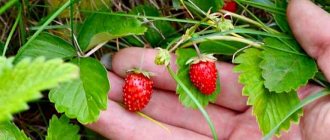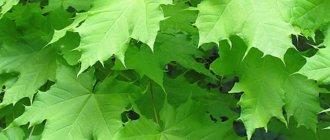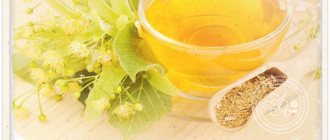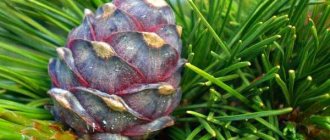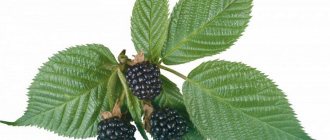Composition and calorie content of chrysanthemum flowers
They belong to the group of products with very low energy value.
This is good news for girls who watch their figure, but at the same time love culinary experiments. The product can be used in a strict diet with a clear conscience. And not only is it possible, but even necessary, because it is rich in a huge number of useful components. The calorie content of chrysanthemum flowers per 100 g of petals is only 24 kcal, of which:
- Proteins - 3.36 g;
- Fats - 0.56 g;
- Carbohydrates - 0.02 g;
- Water - 91.4 g;
- Dietary fiber - 3 g;
- Ash - 1.67 g.
- Potassium - 567 mg;
- Calcium - 117 mg;
- Magnesium - 13 mg;
- Sodium - 118 mg;
- Phosphorus - 54 mg;
- Iron - 2.29 mg;
- Manganese - 0.943 mg;
- Copper - 137 mcg;
- Zinc - 0.71 mg.
- Vitamin A, RE - 116 mcg;
- Beta carotene - 1.38 mg;
- Vitamin B1 - 0.13 mg;
- Vitamin B2 - 0.144 mg;
- Vitamin B5 - 0.221 mg;
- Vitamin B6 - 0.176 mg;
- Vitamin B9 - 177 mcg;
- Vitamin C - 1.4 mg;
- Vitamin K - 350 mcg;
- Vitamin RR, NE - 0.531 mg.
The plant also contains essential oils, flavonoids, amino acids, polysaccharides, antioxidants, pectin and other biologically active substances that our body needs every day for normal functioning.
Chrysanthemum in Chinese medicine
In ancient China, scientists considered the chrysanthemum one of the most noble plants; it was highly valued for its healing properties.
The earliest information about the beneficial properties of chrysanthemum was voiced in one of the oldest treatises on herbs, “Shen Nong’s Treatise on Roots and Herbs” (Shennong bencaojing). This ancient herbal book describes chrysanthemum as the best rejuvenating and life-prolonging remedy.
According to the treatise, when chrysanthemum tea is consumed over a long period of time, it improves the circulation of qi (energy) and blood, and slows down aging.
These properties of tea make it a favorite drink of Taoists. In Chinese medicine, chrysanthemum tea is used to treat various ailments such as eye disease, drowsiness, rheumatism, and diseases caused by "wind", "dryness" (pathogenic factors in Chinese medicine) and blockage due to poor circulation.
During the Ming Dynasty (1368–1644), Li Shizheng, one of the outstanding herbalists, described the beneficial properties of chrysanthemum in his treatise “Fundamentals of Pharmacology” (Bencao Gangmu).
Lee wrote that chrysanthemum is a non-poisonous plant that reduces fever, removes toxins from the body, reduces heat in the liver and improves vision.
Useful properties of chrysanthemum flowers
The beneficial properties of chrysanthemum flowers have been known since ancient times - they are especially valued for their healing properties in China. To this day, a drink from the petals of the plant in this country is an obligatory part of the treatment of colds, the same as tea with honey in our country. It reduces fever, helps fight runny nose, relieves headaches and sore throat.
What other benefits can chrysanthemum flowers bring to the body? Let's figure it out:
- Strengthening the immune system. The essential oils contained in the plant stimulate the body's defenses, and the rich vitamin-mineral complex helps combat nutritional deficiencies. As a result, the immune system becomes stronger and the likelihood of developing certain diseases decreases significantly.
- Beneficial effect on the nervous system. Chrysanthemum flowers calm the nervous system well and even fight insomnia, the cause of which is stress, depression, and anxious thoughts. In alternative medicine, it is recommended to always keep a bouquet of chrysanthemums in the bedroom in case of poor sleep, and for a more noticeable sleeping effect, you can chew several petals. Despite the fact that the plant has a calming effect, it does not relax, but on the contrary, it tones and helps to collect, activates the brain. So an infusion of chrysanthemum petals is a good morning and evening drink.
- Anti-inflammatory effect. The plant works as a natural antibiotic and helps fight pathogenic flora that stimulate certain inflammatory processes. It helps fight bronchitis, tuberculosis and other lung diseases especially well.
- Normalization of the digestive system. The plant contains pectin, which has a beneficial effect on the gastrointestinal tract. It helps to “collect” all harmful substances and remove them from the body. This is a good prevention of intestinal disorders, especially constipation and flatulence.
- Improvement of joint condition. Regular consumption of petals is a good prevention of joint diseases, namely arthritis, osteochondrosis, etc. If the problem already exists, the plant helps in treatment.
- Prevention of kidney diseases. Drinks from the petals have a diuretic effect and help remove excess and stagnant fluid from the body, which is an excellent prevention of swelling, kidney disease and genitourinary system organs.
- Beneficial effect on the cardiovascular system. Due to the plant's content of substances such as glycosides and a unique element - chrysanthemum, it has a positive effect on the heart and blood vessels, including improving blood circulation, lowering blood pressure, cleansing blood vessels, which in turn reduces the likelihood of developing vascular blockages and acute heart failure .
- Prevention of senile neurological disorders. The essential oils that the plant contains not only have a beneficial effect on the immune system, but also help fight the development of neurological age-related disorders, especially Parkinson's disease. The petals are used in every possible way in the treatment of this disease; of course, they are recommended to be consumed internally, but it will also be useful to simply inhale the aroma of the plant, rub your hands with fresh petals, take baths, etc.
- Neutralization of free radicals. The petals of the plant contain a powerful antioxidant of the flavonoid group - flavone. It effectively fights increased levels of free radicals, which reduces the likelihood of the formation of abnormal molecular bonds, and therefore the development of oncological processes. The antioxidant effect also helps rejuvenate the body.
- Liver cleansing. The plant has a beneficial effect on the liver, helps its function, removes various wastes and toxins from the body, and helps “digest” aggressive substances. As a result, the likelihood of developing liver disease is reduced.
- Beneficial effects on women's health. The positive effect of chrysanthemum petals on women's health is also noted; infusions of the flower are used in the treatment of painful periods. In addition, the plant increases lactation.
- Improved vision. Finally, it is worth noting that the plant has a beneficial effect on the organs of vision; it helps not only to fight against visual impairment, but also against various ophthalmic infections.
As you can see, the benefits of chrysanthemum flowers are simply enormous, which makes them an absolutely invaluable food product.
Contraindications
Tea with chrysanthemum is contraindicated:
- People suffering from diseases of the cardiovascular system.
- People suffering from liver, kidney or spleen diseases.
- People suffering from chronic colitis.
- Pregnant women.
- Children under 12 years old.
- With high blood pressure.
- In case of an allergic reaction to the plant.
It is not recommended to combine the drink with foods such as celery, pork and chicken.
In addition, for tea to be healthy, it must be brewed correctly. Being too strong, this drink can cause harm to health.
Buckwheat honey: properties, benefits, recipes and contraindications
Benefits of chrysanthemum tea
Chrysanthemum tea has many beneficial properties. It is caffeine-free and helps calm your nerves. Tea also helps regulate cholesterol and blood pressure.
In addition, it has a cooling effect and can be used as a remedy for sunstroke. If you drink chrysanthemum tea with food, it facilitates digestion, especially when eating fatty and fried foods.
Chrysanthemums contain
- Beta-carotene, which turns into vitamin A and improves the immune system and skin condition.
- A large amount of potassium, calcium and other minerals: iron, magnesium and phosphorus.
- B vitamins (choline, folic acid, niacin, riboflavin)
- Vitamin C, which helps treat colds, flu and sinus congestion.
Chrysanthemum tea has antiviral antibacterial properties and weakens bacterial infections such as staphylococcus, E. coli, streptococcus, Corynebacterium diphtheria and B. Dysenteriae.
Tea also removes toxins, cleanses the blood and improves blood circulation. It cleanses the liver, helps improve vision and hearing. It also strengthens the lungs and helps with shortness of breath.
And finally, chrysanthemum tea contains zero calories if you drink it without sugar or honey. Therefore, it is a good drink for various diets.
Description and chemical composition of the flower
Plants, depending on the type, can be annual, perennial and subshrub. The leaves are whole, pubescent, light green in color. The flowers are collected in baskets, often single-row, in hybrid varieties - multi-row. The fruits are achenes.
The chemical composition of the plant is rich and very diverse, it contains: beta-carotene, choline, riboflavin, folic acid, niacin, vitamin C, flavone, potassium, magnesium, phosphorus, iron, selenium, silicon, essential oil.
“Ilona” - the meaning of the name, the origin of the name, name day, zodiac sign, mascot stones
Contraindications and harm to chrysanthemum flowers
However, unfortunately, there are cases when, despite all the usefulness, chrysanthemum flowers are prohibited from being eaten. This plant, like all other products, has some contraindications, however, fortunately, there are not so many of them.
Allergy sufferers should use this product with caution. Individual intolerance to flower components is easily calculated. As a rule, if you are allergic to chrysanthemums, the smell alone will cause some discomfort. Of course, in this case you shouldn’t even think about eating them.
In general, an allergy to chrysanthemums is not a rare phenomenon, and therefore you should be careful about introducing them into your diet even during pregnancy. You should not let small children try drinks and dishes made from chrysanthemums.
As for the feeding period, the situation is very twofold. On the one hand, the harm of chrysanthemum flowers can manifest itself as an allergic reaction in the mother or child, on the other hand, the product improves lactation. The best solution would be to introduce the product gradually. If it causes even the slightest signs of an allergy, refuse the drink and don’t worry, there are plenty of other lactogenic agents.
Note! If you have any acute or chronic diseases, then before introducing chrysanthemum flowers into your diet, you should consult with your doctor. This plant contains many strong biologically active substances that will only benefit a healthy body or have a neutral effect, but can cause harm to a patient.
How to brew chrysanthemum tea
There are several ways to brew tea from chrysanthemum flowers. Some people add dried flowers to green or black tea. You can also buy a ready-made tea mixture “Ba Bao Cha” (Eight Treasures Tea), to which dried chrysanthemum flowers are added.
You can make tea from dried chrysanthemum buds, which are also available in Asian grocery stores. For example, buy buds the size of lentils and when they are brewed, they open into flowers about 3 cm in diameter.
Many Asian food stores sell ready-made chrysanthemum tea in bags or jars, but these mixtures tend to contain a lot of sugar, so it's best to avoid them.
From the point of view of Chinese medicine, sugar has a very “yin” (cold) property, chrysanthemum tea also has “yin” energy, so adding sugar to it will make it overly “cooling”.
But if you have too much yang energy or live in the tropics, chrysanthemum tea is a great way to refresh yourself.
On cool days, you can add a pinch of sea salt, which has a "yang" warming energy, to balance out the "cooling" energy of the chrysanthemum.
- 6–8 dried chrysanthemum flowers or buds.
- Hot water.
- Cup with lid.
Preparation:
- Place dried chrysanthemums in a cup.
- Pour boiling water over it.
- Stir and then drain. This step can be skipped, but I do it to get rid of the surface husks from the flowers.
- Add more hot water and cover the cup with a lid.
- Let it sit for five minutes.
- Drink hot.
The indicated quantity is for one person. I prefer to use a clear glass cup so I can see the blooming flowers.
The buds can be reused by simply adding more hot water after the first brew.
Chrysanthemum tea has a yellow color and a floral aroma. It can be drunk cold or hot on warm summer days. Thanks to its healing properties, this drink can be an excellent substitute for tea or coffee.
PS Such recipes can maintain health and well-being, but they cannot replace medications. If you have any illness, you should consult a doctor.
English version
LIKED THE ARTICLE –
SHARE WITH YOUR FRIENDS!
Healthy chrysanthemum tea recipes
Chrysanthemum tea is not as widely used as other herbal teas, but it is no less beneficial. This drink has a delicate taste with bitter notes, and is a bit like green tea. To prepare chrysanthemum tea you will need:
- 4-5 dried chrysanthemum flowers;
- tea leaves;
- water.
Cooking technology:
Pour 200 ml of boiling water over the tea leaves and flowers, cover with a lid and leave for 10-15 minutes. Then strain the resulting infusion using a strainer. Ready! For sweetness, you can add a little refined sugar, dried fruits, or honey.
Interesting fact: chrysanthemum grown at home can purify the air around it. However, it is not advisable to keep these flowers close to the bed - due to the strong aroma, they can cause headaches or migraines.
Recipes for drinks made from chrysanthemum flowers
The use of chrysanthemum flowers in recipes for various dishes is, of course, a very exotic phenomenon in our country, however, in the absence of contraindications, it is simply a sin to ignore the potential of this most useful food product. The petals are ideal for fruit and vegetable fresh salads; you can also prepare various desserts from them, including jams, syrups and preserves.
Let's look at some interesting recipes:
- Sweet chips made from chrysanthemum petals. Take a chrysanthemum flower and carefully tear off all the petals. Soak them in water for 20-30 minutes, then rinse thoroughly and dry well (do not use petals with defects). Prepare the egg-flour mixture: beat an egg (1 piece), add wheat flour (1-2 tablespoons) to it. Heat up any vegetable oil (50-70 ml) and pour it into a deep bowl. Now you need to work quickly before the oil cools down. Take a petal at a time and dip it first in the egg-flour mixture, then in the oil - if it cools down, you need to heat it up, it is important that it is very hot. Place the petals on soft paper so that it absorbs excess oil. When they are all on the paper, sprinkle them with powdered sugar. This original delicacy is ideal served with ice cream.
- Chrysanthemum jam. Tear off, wash and dry the petals (100 grams), remove the bad ones. Place the petals in a bowl and sprinkle with sugar (100 grams), after an hour, start rubbing the petals with your hands, you need to achieve moisture. Now add lemon juice (1 tablespoon), stir and leave the mixture in a warm place overnight. In the morning, put a pan of water (200 ml) on the fire, when it boils, add sugar (100 grams) and infused petals. Once the sugar has dissolved, turn off and cool the jam to room temperature. Next, bring it back to a boil and let it cool again - these steps will get rid of the water and thicken the syrup. Finally, bring the jam to a boil again and, without waiting for it to cool completely, pour into sterilized jars.
- Fruit salad with chrysanthemum petals. Cut an apple into cubes (1 piece), and a pear into thin strips (1 piece). Peel the tangerine (1 piece), divide into segments and cut each in half. Place all the fruits in a bowl, sprinkle with fresh petals to taste. Prepare the dressing: mix melted honey (2 teaspoons) with orange juice (2 tablespoons). Pour the dressing over the salad, stir, and after 10-15 minutes you can eat.
You can conduct such tasty and useful experiments in your kitchen with chrysanthemum petals, however, when using flowers in cooking, you always need to be sure of their quality and that the variety is edible. Of course, chrysanthemums bought at a flower shop will not suit you - during the growing process they are treated with strong chemicals. Ideally, of course, use flowers personally grown at your dacha or indoors.
If you are not ready to add flower petals to dishes and eat desserts made from them, but want to appreciate the healing properties of the product, you can resort to less exotic solutions and simply brew an infusion from the plant.
There are a lot of drink recipes, we’ll tell you a few of them:
- “Clean” infusion. This recipe involves using only chrysanthemum petals. It is prepared in the following proportions: for 5-6 flowers (depending on their size), take 200 ml of water. Flowers can be placed whole in a brewing container, or you can first separate them into petals. You need to pour boiling water over them and leave for 3-8 minutes, depending on the desired strength.
- Tea made from chrysanthemum flowers. If your first drink seems too rich, you can try this recipe. Brew regular tea, green or black, in your traditional way, but add some chrysanthemum petals to the brew. This will make the drink healthier, and the floral taste will not be pronounced.
- An infusion of chrysanthemum petals, honeysuckle and hawthorn. For this drink, mix chrysanthemum flowers (2 teaspoons), hawthorn and honeysuckle fruits (1 teaspoon each), pour boiling water (400 ml) and let steep for 10-15 minutes. It turns out to be very tasty and healthy, and is especially good at lowering cholesterol levels.
Of course, you can allow yourself any other experiments with drinks, add various herbs, dried berries, fruits and spices, thus enhancing one or another beneficial effect of flowers. And, of course, no one forbids the use of sweeteners.
Widespread use of chrysanthemums in traditional medicine.
☆
In medicine
Indian chrysanthemum is not a pharmacopoeial plant and is not used in official medicine, but is widely used in folk medicine in eastern countries as an anti-inflammatory, mild sedative, and antispasmodic.
Contraindications and side effects
The main contraindication to the use of Indian chrysanthemum is individual intolerance. The flowers of the plant have a rather pronounced aroma, which can cause allergic reactions. Therefore, it is undesirable to use the plant for medicinal purposes during pregnancy, breastfeeding or childhood.
In cooking
In Japan, they make a very healthy and pleasant-tasting drink from a mixture of leaves and flowers of two types of chrysanthemums: Indian and Chinese. Wine is also infused on the petals of the plant - this gives the drink an additional floral aroma. In Japanese restaurants, delicate colorful dishes are prepared from delicate chrysanthemum petals.
In China, a delicious dessert reminiscent of a delicate cake is prepared from chrysanthemum flowers. The flowers are breaded in a mixture of beaten eggs and flour, then briefly dipped in boiling oil. After the excess oil has drained off, sprinkle the flowers with sugar and serve.
Chrysanthemum flower tea is a very famous drink. It has a rather pleasant taste, the drink improves liver function, removes toxins and has a positive effect on vision. Also, this tea contains virtually no calories, so it is good to use in dietary nutrition.
In cosmetology
Chrysanthemum has a unique skin rejuvenating property. The plant has a delicate aroma, tones and nourishes the skin, retains moisture in the cells of the epidermis, smoothes out fine wrinkles, helps smooth the skin, relieves mild swelling and irritation, and has a calming effect on the skin. Chrysanthemum infusion is very useful for rinsing hair for shine. For the production of cosmetics, extract and essential oil obtained from chrysanthemum flowers are most often used.
In gardening
The best place for planting Indian chrysanthemum is a sunny hill with loose, moisture-permeable soil rich in nutrients.
Indian chrysanthemums are most often propagated by cuttings from shoots that form from mother plants.
Chrysanthemum cuttings can be planted both in spring (May-early June) and in autumn (2 weeks before the first frost). It is best to plant in rainy or cloudy weather. You cannot plant cuttings in the heat - the young seedling will not withstand the scorching sun. After planting the cuttings, you need to do the first pinching - remove the growing point. And after 3 weeks, pinch the top of the shoot.
Sometimes chrysanthemums are planted by seeds. The best time to sow chrysanthemum seeds in the ground is May. Small holes are prepared for planting; 3-4 seeds are sown in each hole. The distance between the holes should be at least 25 cm. When growing Indian chrysanthemum from seeds, it is important to maintain the moisture of the top layer of soil.
To prevent the soil from drying out, you need to cover it with a film, not forgetting to ventilate it occasionally. Water very carefully, preferably spraying. After seed germination, remove the film. Picking chrysanthemums is done after the appearance of the third pair of leaves. Young seedlings are not frost-resistant, so they are planted in the ground only after the onset of constant warmth.
During long-term cultivation for wintering, the bushes are dug up, the stems are cut at a height of 20 cm, and placed in boxes. The roots are sprinkled with damp sand and the boxes are placed in the cellar at a temperature of +2°C.
Chrysanthemum tolerates the dry air of city apartments quite well, so it also grows successfully in pots. Such chrysanthemums are replanted every year, in the spring, using a soil mixture of turf and leaf soil, compost and sand (4:2:2:1).
Classification
Indian chrysanthemum (Latin Chrysanthemum indicum L.) is a species of perennial herbaceous plants of the genus Chrysanthemum (Latin Chrysanthemum) of the Aster family (Latin Asteraceae) or Compositae (Latin Compositae).
Botanical description
The rhizome of Indian chrysanthemum is thick and branched. The stem is erect or creeping at the base, up to 1 meter tall. Leaves are ovate or ovate-oval, sparsely pubescent, 6-7 cm long and 1-2.5 cm wide, pinnate or slightly dissected; the leaves growing at the top of the stem are small. The flowers are pink, white or yellow, collected in inflorescences - baskets up to 2.5-5 cm in diameter. A significant part of the middle tubular flowers are transformed into reed flowers. The fruits are oblong achenes.
More on the topic: Sugaring at home
Spreading
A wild species of chrysanthemum was found in China, in places with a subtropical climate and high humidity. Wild chrysanthemums grew here and in the bamboo forests near the rice fields. Now the wild Indian chrysanthemum is distributed throughout almost the entire territory of China.
Chrysanthemum is grown as a beautifully flowering, decorative foliage plant in the south of the European part of Russia, in many provinces of China, as well as in Japan, India and most countries of Europe, Asia and America.
This flower grows on grassy mountain slopes, in bushes, along river banks and in other damp places.
Regions of distribution on the map of Russia.
Dried inflorescences (“flowers”) are collected as medicinal raw materials of Indian chrysanthemum.
Raw materials are harvested during the most intense flowering of the plant. The collected flowers are treated with sulfur, then the moisture is removed from them by squeezing and dried in the sun. Chrysanthemum flowers for making tea drinks are not subjected to such processing. They are collected by hand and then dried in the most natural conditions possible.
Chemical composition
Indian chrysanthemum inflorescences contain gandelin chrysanthelid, chrysanthemol, chrysanthemiol, indicumenon, chrysanthenon, cis-spirenol ester, trans-spirenol ester, angeloincumambrine B, angeloylayadin, arteglasin A, acacia, luteolin, luteolin-7-O-β-D-glucoside, querce ting -O-β-D-glucoside, chrysanthemine, chrysanthemumaxanthin, daucosterol, coumambrine A, acacetin, acacetin-7-O-β-D-galactopyranoside, 1-O-behenoylglycerol, palmitic, ursolic and linoleic acids, b-sitosterol, lupeol , octacosanol, etc.
Also found in the plant are essential oils, dl-camphor and chrysanthemum glycoside, which, upon hydrolysis, breaks down into glucose and cyanide. Found were stachydrine, adenine, choline, vitamin A, and the lactone compound eufualactone, which is the main core of chamazulene.
Pharmacological properties
Indian chrysanthemum contains a huge range of minerals necessary for the normal functioning of the human body, especially the nervous system: potassium, magnesium, selenium, zinc. It also contains vitamins, especially vitamin C.
Essential oil has the greatest therapeutic effect, which strengthens the human immune system, increases the body's defenses and has a beneficial effect on the nervous system, helping with sleep disorders.
Chrysanthemum infusion reduces high blood pressure.
The alcoholic extract of this plant helps fight hemolytic streptococci, Staphylococcus aureus, and meningococcus; it has the effect of a natural antibiotic.
Chrysanthemum tea also has many beneficial properties. It contains no caffeine and has a calming effect. Substances contained in tea help regulate cholesterol levels and lower blood pressure. A drink made from chrysanthemums facilitates digestion, especially after eating heavy fatty and fried foods.
In China, a drink made from chrysanthemums is included in the treatment of colds. It reduces fever, relieves cough, and has antiviral and antibacterial properties. Tea also removes toxins, cleanses the blood and improves blood circulation. Tea made from dry chrysanthemum petals helps maintain calcium levels.
Use in folk medicine
In Chinese folk medicine, chrysanthemum leaves are used to treat migraines, dried flowers are used to improve appetite, and petals are used as an aromatic agent that has an anti-inflammatory and mild sedative effect.
Baths with the addition of chrysanthemum petals have a beneficial effect not only on the skin, but also on the psychological state, strengthen weakened immunity and stimulate appetite. An aromatic bath of chrysanthemum petals improves vitality, has a calming effect on the nervous system and allows you to relax as much as possible.
Chrysanthemum is used by folk healers to treat eye diseases, the flowers are used externally to treat boils, scrofula, deep abscesses, eczema and itchy skin.
Flowers and leaves of chrysanthemums in many countries were used to treat malaria, alcoholism, migraines, stomach diseases, inflammation of the throat and cervix, hypertension, and the roots were used as a laxative.
To treat a severe runny nose or decreased sense of smell, chrysanthemum flower petals soaked in oil are placed under the nose.
Chrysanthemum is used for exacerbation of chronic bronchitis and pulmonary tuberculosis. Chrysanthemum honey is also effective against these diseases (it is obtained by infusing the petals with honey).
Chrysanthemum will be useful for joint diseases: arthrosis, arthritis, osteochondrosis. To improve the patient's condition with these diseases, baths with flower petals, as well as compresses from chrysanthemum honey, are recommended. It is recommended to apply compresses of petals soaked in vegetable oil to the joints. For osteochondrosis, rubbing the spine with an infusion of chrysanthemum flowers helps.
More on the topic: What is glaucoma: diagnosis and treatment with drops
Chrysanthemum tea with linden has a positive effect on the condition of a person suffering from kidney disease. The drink has diuretic properties and perfectly cleanses the body.
Chrysanthemum in the form of a decoction helps normalize myocardial function and reduces “bad” cholesterol. The plant helps with hypertension. To reduce pressure, the petals are first kept in vegetable oil, and then applied to the wrists and wrapped in wax paper. To relieve headaches, chrysanthemum oil infused with flower petals is prepared. It is used for light massage of the temples.
In Indian folk medicine, chrysanthemum is used to treat gonorrhea and migraine.
Historical reference
The name "chrysanthemum" comes from the Greek words: "chrysos" - "golden" and anthemis - "flower". That is why Carl Linnaeus named the chrysanthemum - “Chrysanthemum”.
The chrysanthemum became one of the main symbols of Japan a long time ago, back in the 12th century - it was then that the image of the flower appeared on the blade of the emperor reigning at that time. Already from the VIII-XII centuries. Clothes and utensils were decorated with images of chrysanthemums. Only in 1871 was the image of the chrysanthemum declared sacred and allowed to be used only by persons belonging to the imperial house. The beautiful flower was placed on the national flag, on coins and on the highest Japanese order, the name of which has not changed to this day: the Order of the Chrysanthemum. The stylized image of the sixteen-petalled imperial golden chrysanthemum is still the unofficial coat of arms of Japan.
Chrysanthemum in Japanese is called "kiku" ("sun") and is denoted by the same hieroglyph. According to legend, the Japanese themselves, the Yamato, come from the Sun and therefore bear the proud name “people of the sun.”
One of the most beloved holidays in Japan, the Chrysanthemum Festival, is also associated with the chrysanthemum. This romantic holiday, which takes place during the chrysanthemum blossoms, has been celebrated for a long time. On this day in ancient times, the Japanese decorated their homes with blooming chrysanthemums, and among the nobility there was a custom of riding on boats decorated with flowers. Competitions were held for the best poets of Japan to write poems dedicated to the chrysanthemum, the hero of the occasion.
The chrysanthemum was first brought to Europe from Japan to England back in 1676 by the Dutch traveler Reede, but the flower was practically not noticed by anyone. Therefore, the date of appearance of the chrysanthemum in Europe is considered to be 1789, when Captain Pierre Blanchard brought it to Marseille. And only 40 years later, in 1829, the gardener Berne from Toulouse began to breed chrysanthemums from seeds, and only after obtaining several new beautifully colored varieties, other gardeners followed his example. And in the 50s. In the 19th century, about 300 new varieties of chrysanthemums were developed, differing not only in color, but also in the shape of the flowers.
Literature
Alekseyuk E.F. Korean chrysanthemum: cultivation and new varieties. Newspaper Ural Gardener, No. 51, 2012
Nedoluzhko A. I. Chrysanthemums for Primorye / Moskalyuk T. A. - Vladivostok: BSI FEB RAS, 2004. - 51 p.
A.I. Schröter, B.G. Valentinov, E.M. Naumova
- Directory “Natural raw materials of Chinese medicine” (in 3 volumes), volume I, Moscow, 2004.
I liked the article. Share it with others!
https://lektrava.ru
☆
Chrysanthemum is not only an amazingly beautiful flower, but also a very useful plant. Here are some ways to use chrysanthemum in folk medicine.
Tea from chrysanthemum petals You can make healing tea from chrysanthemum petals and leaves. The petals and leaves are brewed together with green tea. This drink will quench your thirst very well, it tastes good, and has an antispasmodic and disinfectant effect.
Baths with chrysanthemum petals You need to pick the petals from 12-15 chrysanthemum flowers. Then pour two glasses of boiling water over them and leave for half an hour. Prepare warm water in advance, into which you then need to pour the aromatic infusion. It is useful to take such a bath three times a week for 15 minutes, the course is continued for a month. Baths with an aromatic infusion of chrysanthemum petals perfectly lift your spirits, increase vitality, have a calming effect on the nervous system and generally charge you with positivity.
More on the topic: Why are vitamins with Zinc prescribed?
For colds and bronchitis To reduce fever and soothe cough, place chrysanthemum petals under your upper back, and place a bowl of warm water with several chrysanthemum flowers at the head of the bed. Inhalations with chrysanthemum petals will also be useful.
home
☆
Chrysanthemums are unpretentious autumn flowers of truly royal origin. In the old days, in the East, the most luxurious feasts were held in their honor, poems and legends were dedicated to them. Today, chrysanthemums have no less fans than recognized beauties: roses or orchids. All thanks to the fact that the use of chrysanthemums is not limited to their decorative properties. The healing properties of chrysanthemums allow them to be used in folk medicine, and the unusual taste of vegetable chrysanthemums has appealed to many gourmets.
Using chrysanthemum in cooking
Chrysanthemum dessert - to your surprise, this is not a fantasy at all, but a very popular dish in eastern countries. Few people know that among the huge variety of chrysanthemum varieties, there is a unique edible “vegetable chrysanthemum”.
Vegetable chrysanthemum is a specially bred variety with a powerful, fleshy, branched stem reaching 1 meter in height. This chrysanthemum is distinguished by openwork, carved, carrot-like leaves and white-yellow daisy flowers. Young leaves, flowers and shoots can be eaten.
Eating this strange plant helps prolong life. Vegetable chrysanthemum is also used in medicinal and dietary nutrition. It is especially useful when fresh. Its young leaves and flowers have a piquant taste and delicate aroma. Dark green leaves can be stewed with vegetables, boiled, eaten raw, or prepared in salads. Vegetable chrysanthemums are even used to make soups and pickle them for future use.
Edible chrysanthemums are especially popular in Japan and more recently in Europe and America. Vegetable chrysanthemum came to us quite recently. It can be grown both indoors and outdoors.
The unusual taste of chrysanthemums will be appropriate even when preparing desserts. For example, the Chinese came up with a very tasty dessert from its petals. The dish resembles the most delicate cake. To prepare, dip the petals in a mixture of beaten eggs and flour, and then quickly dip them into hot oil. After this, place the petals on paper to remove excess oil and sprinkle with sugar. That's all - the chrysanthemum dessert is ready! The delicacy is best served with ice cream.
Healing properties of chrysanthemums
Even the ancient Chinese claimed that the healing properties of chrysanthemums can prolong human life. Their petals, regardless of color, are rich in minerals that are beneficial to the human body. However, odorless flowers do not have healing properties.
The use of chrysanthemum when brewing tea is very popular; its fragrant petals are added to regular green tea. This drink will be useful for any infectious disease. Ancient Chinese doctors believed that it improves vision, relieves fever, removes toxins and improves liver function.
Thanks to the healing properties of chrysanthemum, you can cure colds, dizziness, and normalize blood pressure. For insomnia and bronchial asthma, it is useful to place a basin filled with chrysanthemum petals next to your head. It is very useful to take aromatic baths. They will strengthen the immune system in the fall and improve appetite.
Tea with chrysanthemum petals is also useful for people suffering from Parkinson's disease, tuberculosis, and stomach inflammation. And simply inhaling the aroma of chrysanthemums calms the nerves well.
For the winter, you can prepare honey with chrysanthemum petals, then you will not be afraid of colds and coughs. This honey compress can also be used for bruises. For arthritis and rheumatism, the petals are mixed with oil and applied to sore joints.
The use of chrysanthemums is justified not only in folk medicine. You can make wine from the petals of this beautiful flower. In Asian countries it is used as an aperitif. It perfectly lifts your mood and clears your thoughts. The main thing is not to forget that the healing properties of chrysanthemums are most pronounced in small fragrant flowers.
https://sait-pro-dachu.ru
News MirTesen


